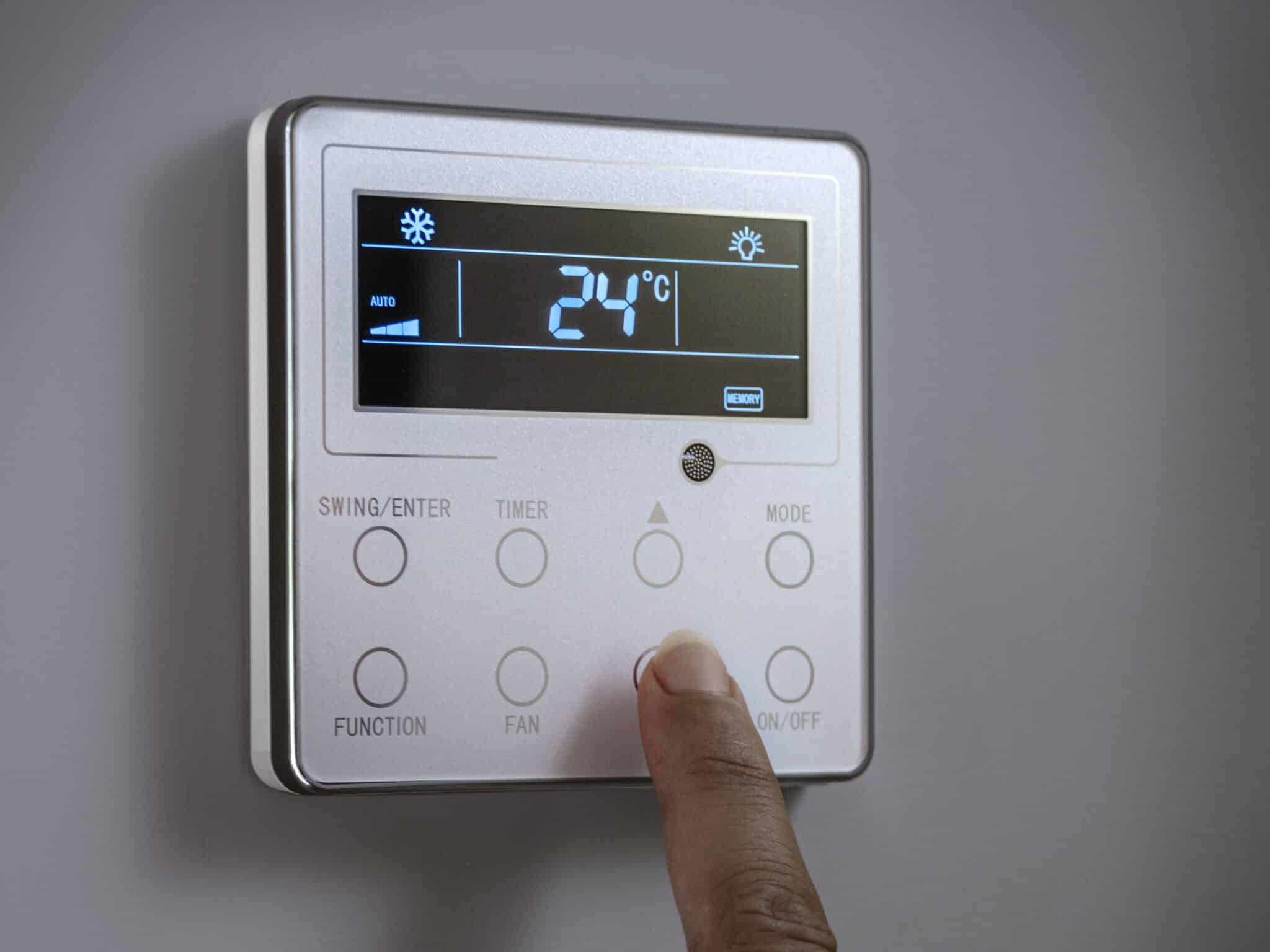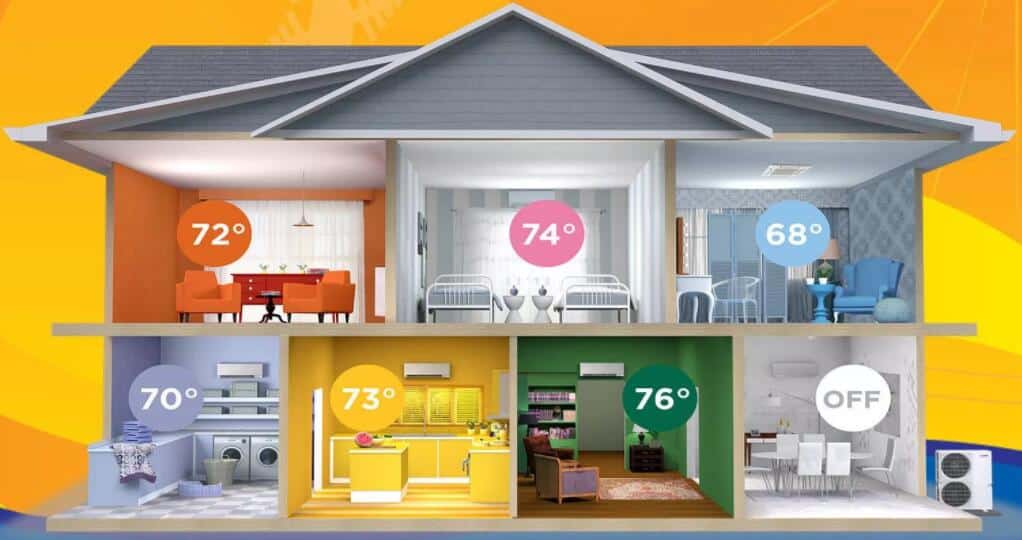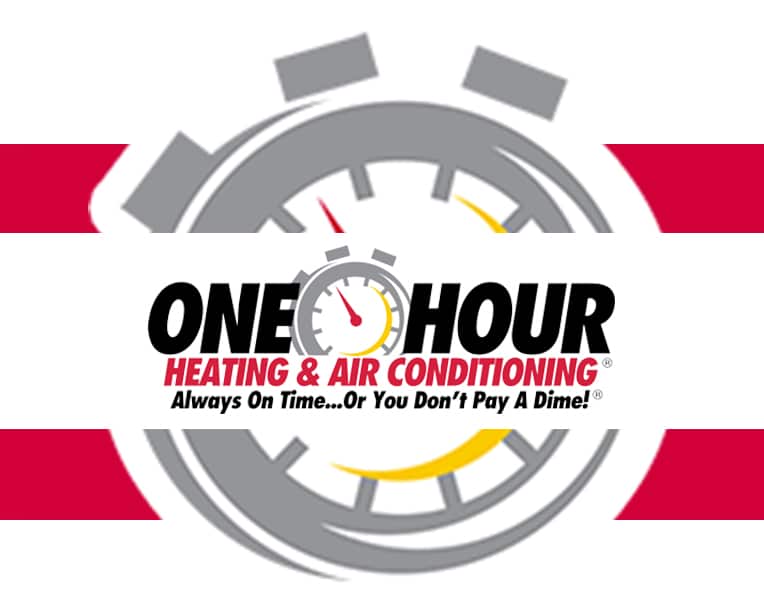Zoned HVAC Systems – Ever wished you could control the temperature in different rooms of your house independently? Imagine walking from a cool, comfortable living room into a cozy, warm bedroom without adjusting a single thermostat.
Zoned HVAC systems make this possible, offering personalized comfort and enhanced energy efficiency.
In this blog, we’ll explore how these systems work, their benefits, and how to choose the right one for your home in areas like Spring Valley, CA, El Cajon, and Lakeside, CA.
Understanding Zoned HVAC Systems
What is a Zoned HVAC System?
A zoned HVAC system might be the answer you’re looking for. Imagine not having to argue about whether it’s too hot or too cold in your home.
This system allows you to set different temperatures for different areas or “zones” in your house. So, if you like your bedroom cooler than the living room, you can have it just the way you want.
How Zoned HVAC Systems Work
It’s pretty straightforward. A zoned HVAC system uses a series of dampers in the ductwork. Think of these dampers as gates that control the flow of air to each zone. Each zone has its own thermostat, allowing you to set the desired temperature for that specific area.
When a thermostat calls for heating or cooling, the system opens the damper for that zone while keeping others closed, directing the air only where it’s needed. This means you’re not wasting energy heating or cooling areas of your home that you’re not using.
Benefits of Zoned HVAC Systems
Energy Efficiency and Cost Savings
With zoned HVAC systems, you can say goodbye to those sky-high bills. These systems are designed to heat or cool only the areas of your home that you are using. This means you’re not wasting energy on empty rooms.
By directing the heating and cooling only where it’s needed, your system runs more efficiently, reducing energy consumption and saving you money.
Enhanced Comfort and Control
Think about the different temperature preferences in your home. Maybe you love a cool living room while your kids prefer a warm bedroom. Zoned HVAC systems give you the power to set different temperatures for different areas of your house.
Each zone has its own thermostat, so everyone can enjoy their ideal comfort level. No more fights over the thermostat settings – everyone gets what they want!
Improved Air Quality
Another great benefit of zoned HVAC systems is the improvement in air quality. By controlling the airflow more precisely, these systems can help reduce the spread of dust, allergens, and other pollutants throughout your home.
This is especially beneficial if someone in your family has allergies or respiratory issues. Cleaner air means a healthier home environment for everyone.

Key Components of Zoned HVAC Systems
Thermostats and Zone Control Panels
At the heart of every zoned HVAC system are the thermostats and zone control panels. Each zone in your home has its own thermostat, which allows you to set the desired temperature for that specific area.
The zone control panel acts like the system’s brain, receiving information from each thermostat and signaling the dampers to open or close accordingly.
This setup ensures that each zone maintains the temperature you want, providing precise control over your home’s climate.
HVAC Zoning Dampers
HVAC zoning dampers are the unsung heroes of zoned HVAC systems. These dampers are installed in the ductwork and act like gates, controlling the airflow to different zones. When a zone needs heating or cooling, the corresponding damper opens, allowing air to flow into that area.
When the zone reaches the desired temperature, the damper closes, preventing unnecessary airflow and ensuring efficient operation. This targeted approach helps maximize comfort and energy efficiency.
Ductwork and System Design
The ductwork and overall system design play a crucial role in the effectiveness of a zoned HVAC system. Properly designed ductwork ensures that air can flow freely to each zone without obstructions.
The ducts must be sized and installed correctly to avoid issues like pressure imbalances or reduced efficiency. A well-designed system will seamlessly integrate all components, providing reliable and consistent performance across all zones.
Common Issues and Troubleshooting
Dealing with Temperature Imbalances
One common issue with zoned HVAC systems is temperature imbalances between zones. You might find that some rooms are warmer or cooler than others. This can happen due to several reasons, such as poor system design, incorrect damper settings, or airflow obstructions.
To troubleshoot this issue, start by checking the settings on your thermostats and dampers. Ensure that they are correctly configured to provide even airflow.
Addressing Noisy Ductwork
Another frequent problem is noisy ductwork. If you hear banging, popping, or whistling sounds coming from your ducts, it could be due to expansion and contraction of the metal, loose connections, or air pressure imbalances.
To fix this, ensure that all duct connections are secure and that the ducts are properly insulated to reduce noise.
Additionally, adjusting the dampers to balance the air pressure can help minimize these sounds. If the noise persists, consulting with a professional HVAC technician can provide a more thorough inspection and solution.
Maintenance Tips for Optimal Performance
Regular maintenance is key to keeping your zoned HVAC system running smoothly. Here are a few tips to ensure optimal performance:
- Regularly Clean or Replace Filters: Dirty filters can restrict airflow and reduce efficiency. Check your filters monthly and clean or replace them as needed.
- Inspect Ducts and Dampers: Periodically check your ducts and dampers for any signs of damage or obstruction. Ensure that dampers are functioning correctly and that there are no leaks in the ductwork.
- Schedule Professional Inspections: Have a professional HVAC technician inspect and service your system at least once a year. They can identify and address potential issues before they become major problems.
- Keep Thermostats Calibrated: Ensure that your thermostats are accurately reading the temperature and are correctly programmed for each zone.
By following these maintenance tips, you can help extend the lifespan of your system and maintain a comfortable home environment.
Types of Zoned HVAC Systems
Single HVAC System with Zones
A single HVAC system with zones is one of the most common types of zoned HVAC systems. It uses a single heating and cooling unit connected to a network of dampers and thermostats.
The dampers open and close to direct air to the different zones as needed. This type of system is ideal for homes with an existing HVAC setup that needs upgrading to allow for zoned control without the need for multiple HVAC units.
Multi-Split Systems
Multi-split systems offer another effective way to zone your home. These systems use multiple indoor units connected to a single outdoor unit. Each indoor unit can be controlled independently, allowing for precise temperature control in each zone.
This setup is perfect for homes with specific areas that need more targeted heating or cooling, such as additions or sunrooms that are difficult to keep comfortable with a single system.
Dual HVAC Systems
Dual HVAC systems involve having two separate HVAC units, each serving different zones of your home. This setup is often found in larger homes or homes with multiple stories.
Each unit operates independently, providing more robust and flexible control over the climate in each section of the house. While this option can be more expensive upfront, it offers excellent comfort and efficiency for larger homes.
Ductless Zoned Systems
Ductless zoned systems, also known as mini-split systems, are a versatile and efficient way to zone your home without the need for ductwork. These systems consist of an outdoor unit connected to one or more indoor units via a small conduit.
Each indoor unit can be controlled separately, making it easy to heat or cool specific areas of your home as needed. This type of system is ideal for homes without existing ductwork or for adding zones to areas like garages or basements.

How to Choose the Right Zoned HVAC System for Your Home
Assessing Your Home’s Needs
Choosing the right zoned HVAC systems starts with understanding your home’s unique needs. Consider factors like the size of your home, the number of rooms, and how each room is used.
Do you have rooms that are rarely used, like a guest bedroom, or areas that need special climate control, like a home office? Evaluating these needs will help you determine the best type of system and the number of zones required to maintain comfort throughout your home.
Consulting with HVAC Professionals
Once you have a basic understanding of your home’s needs, it’s crucial to consult with HVAC professionals. Experts can provide valuable insights and recommendations based on your home’s layout and your specific requirements.
They can also perform a load calculation to ensure that the system you choose is properly sized and capable of efficiently heating and cooling your home.
A professional consultation can prevent costly mistakes and ensure that your zoned HVAC systems operate optimally.
Evaluating Different Brands and Models
The market is filled with various brands and models of zoned HVAC systems, each offering different features and benefits. When evaluating your options, consider factors such as energy efficiency, warranty, and ease of use.
Look for systems with high SEER (Seasonal Energy Efficiency Ratio) ratings, as they typically offer better performance and energy savings. Additionally, read customer reviews and seek recommendations to find reliable and well-regarded brands.
Installation Process for Zoned HVAC Systems
Planning and Design
The first step in installing a zoned HVAC system is thorough planning and design. This involves assessing your home’s layout, determining the number of zones needed, and planning the placement of thermostats and dampers.
Proper planning ensures that each zone receives adequate airflow and that the system operates efficiently. Working with a professional during this stage is crucial to avoid design flaws that could impact performance and comfort.
Professional Installation Steps
The professional installation of zoned HVAC systems involves several key steps to ensure everything works smoothly:
- System Setup: The HVAC technician will install the central heating and cooling unit if it’s a new system or modify the existing one for zoning capabilities.
- Ductwork Modification: Dampers are installed within the ductwork to control airflow to each zone. This step may also involve adding or resizing ducts to ensure balanced air distribution.
- Thermostat Installation: Thermostats are placed in each zone, allowing for independent temperature control.
- Control Panel Integration: The control panel is connected to the thermostats and dampers, coordinating the system’s operation based on the settings in each zone.
- Testing and Calibration: After installation, the technician will test the system to ensure it operates correctly, making any necessary adjustments to balance the airflow and temperature across all zones.
By following these steps, professionals ensure that your zoned HVAC systems are installed correctly and function efficiently from the start.
Retrofitting Existing Systems
If you already have an HVAC system and want to upgrade to a zoned HVAC system, retrofitting is a viable option. This process involves adding dampers and thermostats to your current ductwork and integrating a control panel to manage the zones.
Retrofitting can be less expensive than installing a completely new system and can significantly improve the comfort and efficiency of your existing setup.
DIY vs. Professional Installation
Pros and Cons of DIY Installation
Considering a DIY installation for your zoned HVAC system, While it might seem like a cost-effective option, there are several factors to consider:
Pros:
- Cost Savings: You can save on labor costs by doing the work yourself.
- Control Over the Process: You have full control over the installation timeline and methods.
- Learning Experience: It’s a great way to learn more about your HVAC system and home maintenance.
Cons:
- Complexity: HVAC systems are complex, and improper installation can lead to inefficiencies or damage.
- Time-Consuming: The process can be time-consuming and requires significant effort.
- Risk of Errors: Installation mistakes can lead to higher costs in repairs and inefficiencies in the system.
Weighing these pros and cons can help you decide if DIY is the right path or if professional installation might be a better option.
Importance of Professional Expertise
Hiring a professional for your zoned HVAC system installation brings several advantages. Professionals have the expertise and experience to ensure the job is done correctly.
They can identify and address potential issues that you might overlook, ensuring optimal performance and longevity of your system.
Additionally, professional installation often comes with warranties and guarantees, providing peace of mind that your investment is protected.
Safety Considerations
Safety is another critical factor in deciding between DIY and professional installation. HVAC systems involve electrical components and complex machinery, which can pose safety risks if not handled properly.
Professionals are trained to manage these risks, ensuring that the installation is safe and meets all local codes and regulations. Choosing professional installation helps avoid potential hazards and ensures a safe, efficient system.
Transform Your Home Comfort Today!
Ready to experience personalized comfort and efficiency with a zoned HVAC system? Contact One Hour Heating & Air Conditioning San Diego to explore the best options for your home in Spring Valley, CA, El Cajon, and Lakeside, CA.
Our experts are here to help you design and install the perfect system tailored to your needs. Call us today at 619-639-4017 and take the first step towards a more comfortable home!
FAQs About Zoned HVAC Systems
How many zones can be created in a home?
The number of zones that can be created in a home typically depends on the specific HVAC system and the layout of the house. Most systems can handle between 2 to 8 zones, but larger, more sophisticated systems can support even more zones if needed.
Can existing HVAC systems be retrofitted for zoning?
Yes, existing HVAC systems can often be retrofitted for zoning. This process involves adding dampers, thermostats, and a control panel to your current ductwork. Retrofitting can be a cost-effective way to gain the benefits of a zoned system without replacing your entire HVAC setup.
What maintenance is required for zoned HVAC systems?
Maintenance for zoned HVAC systems includes regular filter changes, inspecting ductwork and dampers for any damage or obstructions, and ensuring thermostats are calibrated correctly. It’s also advisable to have a professional HVAC technician perform an annual inspection to keep the system running efficiently.
How do zoned HVAC systems affect energy bills?
Zoned HVAC systems can significantly reduce energy bills by heating or cooling only the areas of your home that are in use. This targeted approach prevents energy waste and enhances overall system efficiency, leading to lower utility costs.
Are zoned HVAC systems compatible with smart home technology?
Yes, zoned HVAC systems are often compatible with smart home technology. Many modern systems can be integrated with smart thermostats and home automation platforms, allowing you to control the temperature in different zones remotely through a smartphone app or voice commands. This integration adds convenience and can further enhance energy efficiency.



















